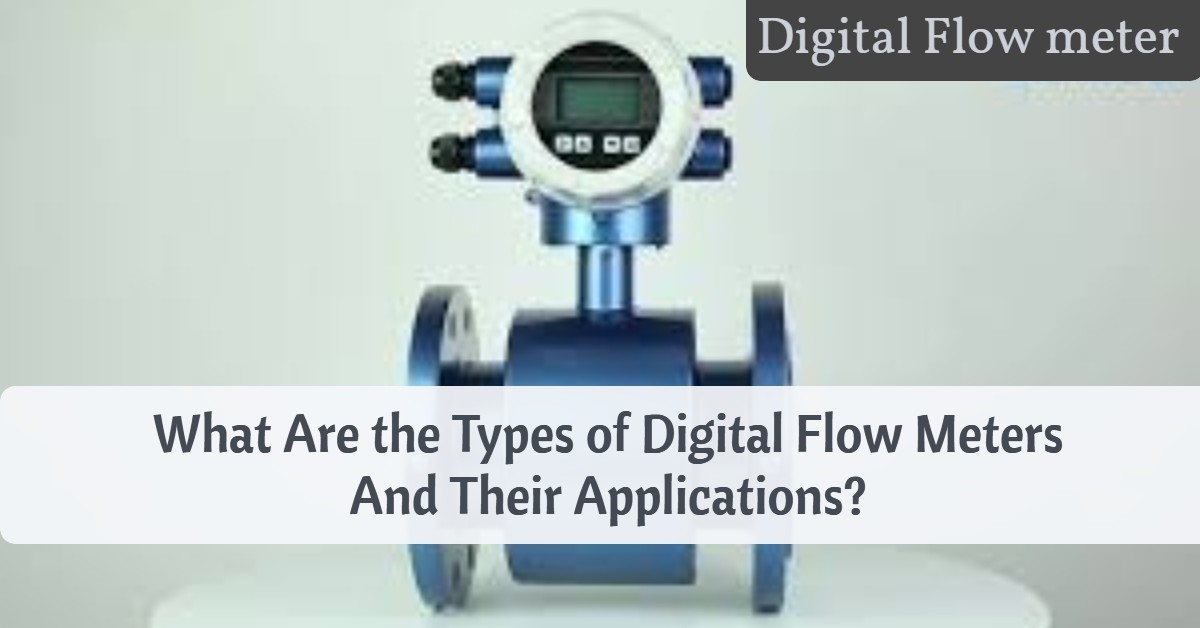A digital flow meter is an instrument used to measure the flow of liquids. These liquids are always linear, nonlinear, and the mass or volume of fluids. Digital flow meters will always give reliable measurements and accuracy as well. These meters are also referred to as flow sensors. And they come in different types as well. Their working principle is also different. The following are some of the different kinds of flow meters and their applications.
Flow Meter Types and Their Applications
Vortex Flow Meters
Vortex meters operate using a pressure sensor to determine the flow of liquids. They use vortices that come from the liquid passing over a bluff body through a flow path. The pulses are always related to the rate of flow. Many operators find the meter the best because it does not have moving parts that may wear or tear. The meter also has no sensitivity to variation in the process conditions.
Vortex is not typical, but it will always give you accurate flow measurements. You can also mold this meter with the vortex bar as one. The make is fit for aggressive fluids or in applications that need high purity.
These meters also operate well in the oil and gas industries, water/wastewater, and food and beverages applications. You can also use vortex meters in utilities, chemical applications, and water purifications. These meters are among the most accurate and cheap meters. And you should always go for them.
Variable Area Meters
These are the most common meters that are used in the flow industry. Variable area meters are also known as rotameters. They have afloat, and this is usually a sphere that is enclosed in a tube. This float will respond to a change in the liquid’s speed being measured by either moving upwards or downwards.
The working principle of a variable area flow meter is that the liquid raises a float in a tapered pipe, and this increases the area for the fluid to pass. If the flow of liquid is high, this means that the float will rise higher. The height of the float is directly related to the flow rate.
These meters are used in many applications because of their high accuracy levels. You can use them in laboratory and industrial applications. If you compare these meters with others, they are the most economical and accurate. Make sure to not use these meters in applications that could coat the float.
Variable area meters are easy to set up, and the setup cost is also low. You can use them to measure both liquids and gases. These meters are found in several applications such as beverages, oil and gas, and water purification industries.
Ultrasonic Meters
Ultrasonic meters give you more advanced technology and great versatility than other meters. These meters determine the speed shift of an ultrasonic signal that was sent in the liquid. These meters come in two different types, which include doppler and transit time.
Ultrasonic meters are used in several applications due to their versatility. You can also use them to measure corrosive fluids. These meters are the best because they have high accuracy levels. And they also do not have pressure drops. Ultrasonic meters have no moving parts, and this makes them have low maintenance costs.
Turbine Meters
Turbine meters have a bladed rotor that is put along the centerline of the flow path. The spinning component has been created to give a pulse when passing either a magnetic or optical sensor. The speed of these pulses is related to the velocity of the fluid. Turbine digital meters come in different makes. And some of them give you high levels of accuracy.
They can also measure the flow rate of thick fluids. The two most common uses of turbine meters are that they are used in irrigation and water purification. You can also use them in gas and oil industries, wastewater, and utilities. Turbine meters have moving parts that may wear or become clogged.
Magnetic Meters
Magnetic flowmeters are among the most popular meters. They use a magnetic field to measure the flow of liquids. When the fluids flow over the magnetic field, a voltage is created, and this energy is directly related to the flow.
These meters do not have moving parts, and so they cannot wear. You can use these meters to handle heavy slurries. Also, ensure that the liquid being determined is conductive. You can use magnetic meters in applications such as; mining, food and beverages, water purification, and paper manufacturing.
Conclusion
A digital flow meter is highly accurate, and you can use it to measure a wide range of applications. These meters come in different types. Before you select one, make sure to understand how they work and their installation process. Also, make sure to ask for help from the seller if you do not know how they operate.
Author Bio:
Naman Modi is a Professional Blogger, SEO Expert & Guest blogger at proteusind.com, He is an Award-Winning Freelancer & Web Entrepreneur helping new entrepreneur’s launches their first successful online business.
